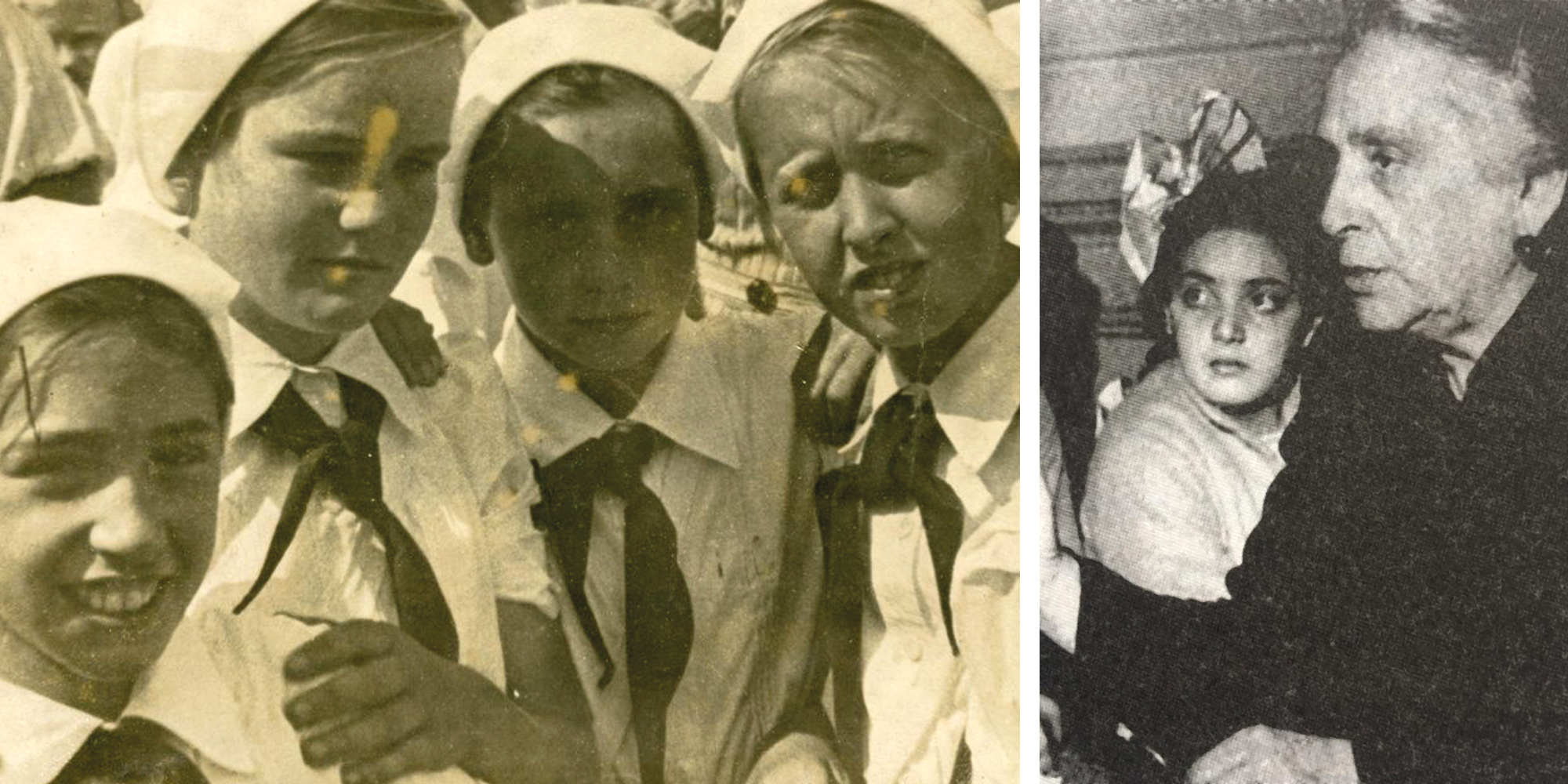
- Tbilisi (Georgia), 1991. Martina Mintegui Bilbao died at age 65 and is buried with her husband, the writer Guivi Goguichaishvili.

Martina was transferred from the Basque Country at the age of 11 to the Soviet Union. In the spring of 1937, bombing Durango and Gernika, General Mola started an offensive and the situation worsened significantly on the northern front: the Basque Government, created the previous year, with the permission of its parents, organized an evacuation of children from 3 to 14 years with governments from various friendly states. They brought to France some 15,000 Basque children, almost 4,000 to the United Kingdom and 1,500 to the Soviet Union – according to the Francisco Largo Caballero foundation, it was 1,495, while the Russian Red Cross says it was 1,765 children.
Most of the children who were taken to France, Belgium or the United Kingdom were not long in exile and returned home when the Second World War broke out. But the USSR actively participated in the 1936 war, betting on the Republicans and, consequently, did not allow the “Russian children” to return. Like Martin, many would live in exile. And after fleeing war, a few years later they had to live a German offensive, leading some of the oldest displaced children in Euskal Herria.
They are called “Russian children”, although many were transferred to other countries, such as Ukraine. Martina Mintegui was transferred to Moscow, Pirogovskaya refuge. There he spent four years, until another war forced them to evacuate again. Martina was taken to Georgia next to the other children in the hostel.
In 1966 he had the opportunity to return to Euskal Herria. Despite his visit, he returned to Georgia. Mintegui compiled in writing the memories of childhood, the customs of Euskal Herria, the evacuation of 1937, that of 1941… and in 1972 published a book.
Otar Chichinadze, a Georgian physician and philanthropist, confesses that he first read Mintegui's testimony in tears. And 50 years later he translated the book into Spanish. The editorial Favorit has published under the title My Basque Country (My Basque Country). In the words of Martina’s daughter, Nanita, “to reedit the book has been somehow to resurrect the parents.”